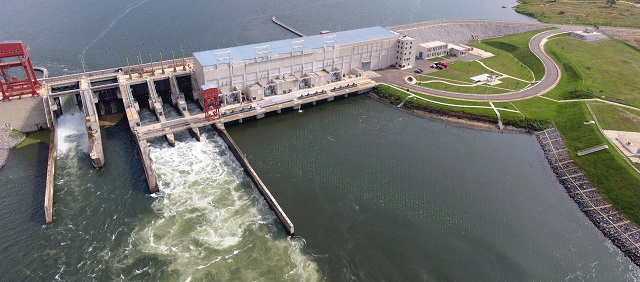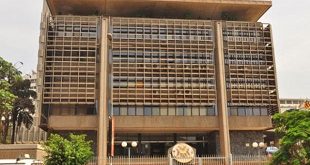
China should focus more on availing more capital for African electrification projects and renewable energy technologies
ANALYSIS | RONALD MUSOKE | China should now focus its economic engagement with Africa towards supporting the continent’s energy access and energy transition objectives, recommends a new study by Boston University’s Global Development Policy Centre and the African Economic Research Consortium.
The advice, the study notes, aligns with the overarching aims of the United Nations’ 2030 Sustainable Development Goals (SDGs) and the African Union’s Agenda 2063.
The study, published this month, analyses two decades (2000-2022) of the China-Africa economic relations, including trade, finance, and foreign direct investment (FDI), and highlights the need for a shift in the nature of the relationship.
Moses Oyintarelado, a data analyst and database manager at Boston University’s Global China Initiative, says “future Chinese economic engagement with the continent especially in matters finance, investors, companies and trade facilitators, should now focus more on capital for electrification projects and renewable energy technologies that utilize Africa’s primary commodity inputs.”
Historically, the interaction between Africa and China has been characterized by Africa exporting primary commodities such as oil and metals, in exchange for finished goods from China.
According to the study China has become many African countries’ lead trading partner, surpassing the United Kingdom and the United States with trade between the two partners (imports and exports of goods) growing significantly from US$11.67bn in 2000 to a peak of US$257.67bn in total trade in 2022.
In terms of exports to China by country, Angola leads through supply of crude oil, followed by South Africa (iron ore exports). These two are followed by, Sudan, the Democratic Republic of Congo and Congo-Brazzaville which have mainly exported crude oil, copper and crude oil, respectively over the last 22 years. The study notes that exports from these countries alone amounted to about 2% of Africa’s GDP in 2022 and 69% of total export value from 2000-2022.
Development finance
Over the last two decades, China has also played a crucial role in availing development finance to the African continent. According to the study, between 2000 and 2022, China provided an estimated US$170.08bn in loans to Africa, with significant portions allocated to the energy sector, predominantly fossil fuels. However, renewable energy projects have received notably less funding, a mere 2% of the loans, despite Africa’s vast untapped potential in solar power.
The researchers point out that while Africa’s trade and development finance has helped overcome some infrastructural bottlenecks, it has perpetuated a trade pattern that is skewed towards the export of raw materials in return for manufactured imports.
The analysis from Boston University comes at a time when Africa’s debt to China is said to be 13% of the continent’s total external debt (as of 2022) – a figure the researchers say is roughly the same debt owed to the World Bank.
China’s big debtors
China’s largest debtors in Africa include; Angola (US$20.98bn), Ethiopia (US$6.82bn), Kenya (US$6.69bn), Zambia (US$5.73bn) and Egypt (US$5.21bn). However, while Angola and Kenya narrowly avoided default recently and look well poised to refinance existing debt, the three African countries that defaulted in the last three years, Zambia, Ghana and Ethiopia, were all among China’s top 10 borrowers in Africa.
Although Chinese companies announced US$112.34bn in Greenfield foreign direct investments during the period under review and completed US$24.60bn in mergers and acquisitions FDI deals for projects and ventures across Africa, the investment was directed mainly towards industry and trade/services, energy and non-energy mining and processing sectors.
The study notes that the majority of both Greenfield and mergers and acquisitions for energy ventures particularly supported fossil fuel projects (oil and gas/LNG). Foreign direct investments into copper, aluminum and iron ore projects largely dominated, showing the involvement of Chinese companies in all stages of the metals and minerals supply chain in Africa.
Time to focus on renewables
The researchers say if China and African countries intend to tackle current development objectives like energy access and the energy transition, then concessional loans, equity finance and trade aimed at renewables and value-added green industries are promising targets for future cooperation.
The researchers say that initiatives such as the African Union’s African Energy Transition Programme show that African countries face the challenge of accessing the necessary and consistent capital to realize energy access and transition objectives.
However, given current economic challenges and future energy opportunities, China can play a role in contributing to Africa’s energy access and transition through trade, finance and foreign direct investments.
“With the pattern of raw commodity exchange for finished goods persisting, Africa needs to coordinate its trade and industrial policies while leveraging their competitive advantage and ensure that over time, they receive the full benefits of the renewable energy technologies using the inputs exported to China,” says Dianah Ngui, the Collaborative Research Manager, at the African Economic Research Consortium.
Going forward, the study notes that in order to accumulate the required resources for a just energy transition and the attainment of the SDGs on the continent, investment will have to be ramped up from around 24% (average for Africa in 2022) to 37% of continent-wide gross domestic product (GDP).
According to the African Development Bank, Africa needs about US$ 2.3 trillion to meet its Sustainable Development Goals (SDGs) over the next six years. Moreover, among the continent’s major challenges is how to push over 600 million Africans onto the electricity grid.
AfDB’s New Deal on Energy for Africa notes that although the percentage of Africans with access to electricity has increased from 35% to 56% since 2016, more still needs to be done.
“In order to achieve universal electricity coverage, we must add 90 million people annually by 2030,” noted Akinwumi Adesina the president of the African Development Bank Group. He was speaking last September at the Korea-Africa Economic Cooperation Ministerial Conference. “We must add 130 million people annually to achieve universal access to clean cooking energy,” he added.
Adesina told the conference that the continent has enormous renewable energy potential, including 11 terawatts (11 million megawatts) of solar energy (which is the highest in the world but just 1% is being utilized across Africa).
“The continent also has 350 gigawatts (350,000 megawatts) of hydropower of which only 7% is utilized; 115 gigawatts (115,000 megawatts) of wind energy potential of which only 2% is used; and 15 gigawatts (15,000 megawatts) of geothermal power of which only 2% is utilized. In order to reach universal access to electricity in Africa, Adesina said, it would require US$ 23bn annually until 2030.
On the other hand, achieving universal access to clean cooking energy will require US$2.5bn per year through 2030; for investments in liquefied gas, biofuel, ethanol, electricity plates, and improved biomass stoves. According to analysis by the International Energy Agency, up to US$ 250 million worth of cooking equipment must be distributed across the continent by 2030.
 The Independent Uganda: You get the Truth we Pay the Price
The Independent Uganda: You get the Truth we Pay the Price



